You Zhou
Victor
TCIP: Threshold-Controlled Iterative Pyramid Network for Deformable Medical Image Registration
Oct 09, 2025Abstract:Although pyramid networks have demonstrated superior performance in deformable medical image registration, their decoder architectures are inherently prone to propagating and accumulating anatomical structure misalignments. Moreover, most existing models do not adaptively determine the number of iterations for optimization under varying deformation requirements across images, resulting in either premature termination or excessive iterations that degrades registration accuracy. To effectively mitigate the accumulation of anatomical misalignments, we propose the Feature-Enhanced Residual Module (FERM) as the core component of each decoding layer in the pyramid network. FERM comprises three sequential blocks that extract anatomical semantic features, learn to suppress irrelevant features, and estimate the final deformation field, respectively. To adaptively determine the number of iterations for varying images, we propose the dual-stage Threshold-Controlled Iterative (TCI) strategy. In the first stage, TCI assesses registration stability and with asserted stability, it continues with the second stage to evaluate convergence. We coin the model that integrates FERM and TCI as Threshold-Controlled Iterative Pyramid (TCIP). Extensive experiments on three public brain MRI datasets and one abdomen CT dataset demonstrate that TCIP outperforms the state-of-the-art (SOTA) registration networks in terms of accuracy, while maintaining comparable inference speed and a compact model parameter size. Finally, we assess the generalizability of FERM and TCI by integrating them with existing registration networks and further conduct ablation studies to validate the effectiveness of these two proposed methods.
Momentum-constrained Hybrid Heuristic Trajectory Optimization Framework with Residual-enhanced DRL for Visually Impaired Scenarios
Sep 19, 2025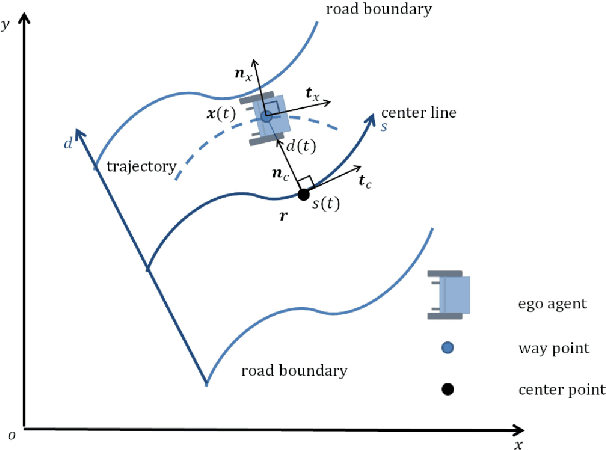
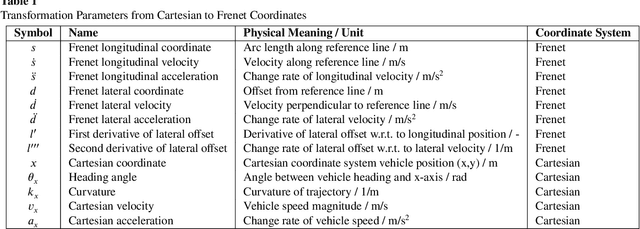
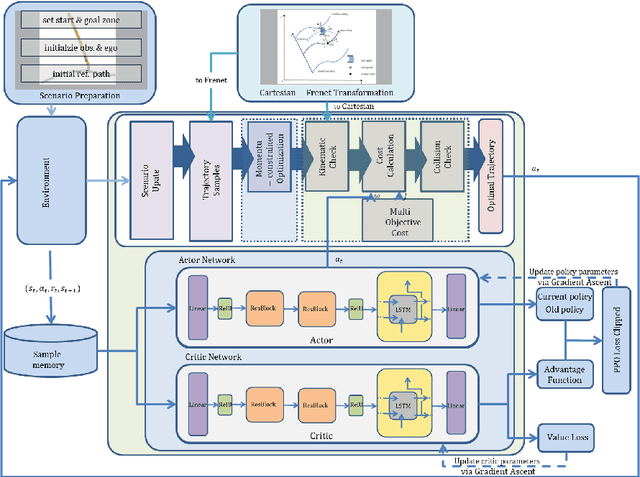

Abstract:This paper proposes a momentum-constrained hybrid heuristic trajectory optimization framework (MHHTOF) tailored for assistive navigation in visually impaired scenarios, integrating trajectory sampling generation, optimization and evaluation with residual-enhanced deep reinforcement learning (DRL). In the first stage, heuristic trajectory sampling cluster (HTSC) is generated in the Frenet coordinate system using third-order interpolation with fifth-order polynomials and momentum-constrained trajectory optimization (MTO) constraints to ensure smoothness and feasibility. After first stage cost evaluation, the second stage leverages a residual-enhanced actor-critic network with LSTM-based temporal feature modeling to adaptively refine trajectory selection in the Cartesian coordinate system. A dual-stage cost modeling mechanism (DCMM) with weight transfer aligns semantic priorities across stages, supporting human-centered optimization. Experimental results demonstrate that the proposed LSTM-ResB-PPO achieves significantly faster convergence, attaining stable policy performance in approximately half the training iterations required by the PPO baseline, while simultaneously enhancing both reward outcomes and training stability. Compared to baseline method, the selected model reduces average cost and cost variance by 30.3% and 53.3%, and lowers ego and obstacle risks by over 77%. These findings validate the framework's effectiveness in enhancing robustness, safety, and real-time feasibility in complex assistive planning tasks.
GELD: A Unified Neural Model for Efficiently Solving Traveling Salesman Problems Across Different Scales
Jun 07, 2025Abstract:The Traveling Salesman Problem (TSP) is a well-known combinatorial optimization problem with broad real-world applications. Recent advancements in neural network-based TSP solvers have shown promising results. Nonetheless, these models often struggle to efficiently solve both small- and large-scale TSPs using the same set of pre-trained model parameters, limiting their practical utility. To address this issue, we introduce a novel neural TSP solver named GELD, built upon our proposed broad global assessment and refined local selection framework. Specifically, GELD integrates a lightweight Global-view Encoder (GE) with a heavyweight Local-view Decoder (LD) to enrich embedding representation while accelerating the decision-making process. Moreover, GE incorporates a novel low-complexity attention mechanism, allowing GELD to achieve low inference latency and scalability to larger-scale TSPs. Additionally, we propose a two-stage training strategy that utilizes training instances of different sizes to bolster GELD's generalization ability. Extensive experiments conducted on both synthetic and real-world datasets demonstrate that GELD outperforms seven state-of-the-art models considering both solution quality and inference speed. Furthermore, GELD can be employed as a post-processing method to significantly elevate the quality of the solutions derived by existing neural TSP solvers via spending affordable additional computing time. Notably, GELD is shown as capable of solving TSPs with up to 744,710 nodes, first-of-its-kind to solve this large size TSP without relying on divide-and-conquer strategies to the best of our knowledge.
UniPTMs: The First Unified Multi-type PTM Site Prediction Model via Master-Slave Architecture-Based Multi-Stage Fusion Strategy and Hierarchical Contrastive Loss
Jun 05, 2025Abstract:As a core mechanism of epigenetic regulation in eukaryotes, protein post-translational modifications (PTMs) require precise prediction to decipher dynamic life activity networks. To address the limitations of existing deep learning models in cross-modal feature fusion, domain generalization, and architectural optimization, this study proposes UniPTMs: the first unified framework for multi-type PTM prediction. The framework innovatively establishes a "Master-Slave" dual-path collaborative architecture: The master path dynamically integrates high-dimensional representations of protein sequences, structures, and evolutionary information through a Bidirectional Gated Cross-Attention (BGCA) module, while the slave path optimizes feature discrepancies and recalibration between structural and traditional features using a Low-Dimensional Fusion Network (LDFN). Complemented by a Multi-scale Adaptive convolutional Pyramid (MACP) for capturing local feature patterns and a Bidirectional Hierarchical Gated Fusion Network (BHGFN) enabling multi-level feature integration across paths, the framework employs a Hierarchical Dynamic Weighting Fusion (HDWF) mechanism to intelligently aggregate multimodal features. Enhanced by a novel Hierarchical Contrastive loss function for feature consistency optimization, UniPTMs demonstrates significant performance improvements (3.2%-11.4% MCC and 4.2%-14.3% AP increases) over state-of-the-art models across five modification types and transcends the Single-Type Prediction Paradigm. To strike a balance between model complexity and performance, we have also developed a lightweight variant named UniPTMs-mini.
Efficient Heuristics Generation for Solving Combinatorial Optimization Problems Using Large Language Models
May 19, 2025



Abstract:Recent studies exploited Large Language Models (LLMs) to autonomously generate heuristics for solving Combinatorial Optimization Problems (COPs), by prompting LLMs to first provide search directions and then derive heuristics accordingly. However, the absence of task-specific knowledge in prompts often leads LLMs to provide unspecific search directions, obstructing the derivation of well-performing heuristics. Moreover, evaluating the derived heuristics remains resource-intensive, especially for those semantically equivalent ones, often requiring omissible resource expenditure. To enable LLMs to provide specific search directions, we propose the Hercules algorithm, which leverages our designed Core Abstraction Prompting (CAP) method to abstract the core components from elite heuristics and incorporate them as prior knowledge in prompts. We theoretically prove the effectiveness of CAP in reducing unspecificity and provide empirical results in this work. To reduce computing resources required for evaluating the derived heuristics, we propose few-shot Performance Prediction Prompting (PPP), a first-of-its-kind method for the Heuristic Generation (HG) task. PPP leverages LLMs to predict the fitness values of newly derived heuristics by analyzing their semantic similarity to previously evaluated ones. We further develop two tailored mechanisms for PPP to enhance predictive accuracy and determine unreliable predictions, respectively. The use of PPP makes Hercules more resource-efficient and we name this variant Hercules-P. Extensive experiments across four HG tasks, five COPs, and eight LLMs demonstrate that Hercules outperforms the state-of-the-art LLM-based HG algorithms, while Hercules-P excels at minimizing required computing resources. In addition, we illustrate the effectiveness of CAP, PPP, and the other proposed mechanisms by conducting relevant ablation studies.
3D Gaussian Adaptive Reconstruction for Fourier Light-Field Microscopy
May 19, 2025Abstract:Compared to light-field microscopy (LFM), which enables high-speed volumetric imaging but suffers from non-uniform spatial sampling, Fourier light-field microscopy (FLFM) introduces sub-aperture division at the pupil plane, thereby ensuring spatially invariant sampling and enhancing spatial resolution. Conventional FLFM reconstruction methods, such as Richardson-Lucy (RL) deconvolution, exhibit poor axial resolution and signal degradation due to the ill-posed nature of the inverse problem. While data-driven approaches enhance spatial resolution by leveraging high-quality paired datasets or imposing structural priors, Neural Radiance Fields (NeRF)-based methods employ physics-informed self-supervised learning to overcome these limitations, yet they are hindered by substantial computational costs and memory demands. Therefore, we propose 3D Gaussian Adaptive Tomography (3DGAT) for FLFM, a 3D gaussian splatting based self-supervised learning framework that significantly improves the volumetric reconstruction quality of FLFM while maintaining computational efficiency. Experimental results indicate that our approach achieves higher resolution and improved reconstruction accuracy, highlighting its potential to advance FLFM imaging and broaden its applications in 3D optical microscopy.
Spike Imaging Velocimetry: Dense Motion Estimation of Fluids Using Spike Cameras
Apr 26, 2025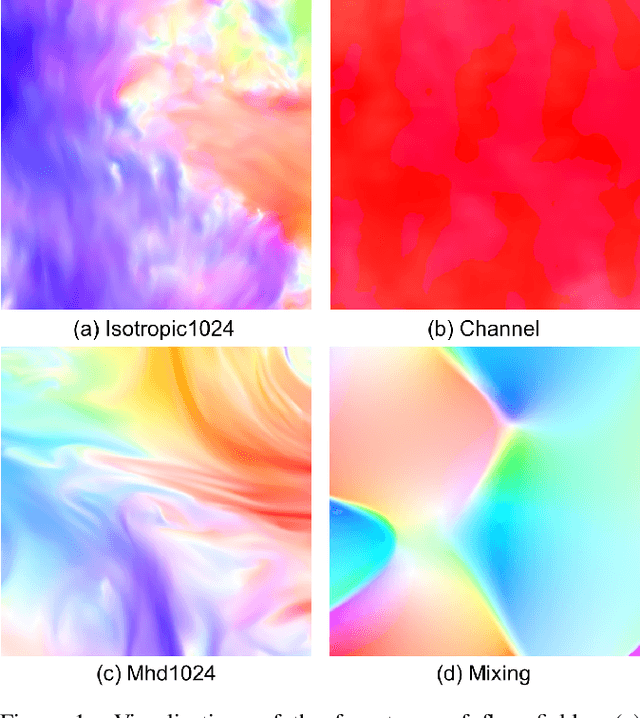


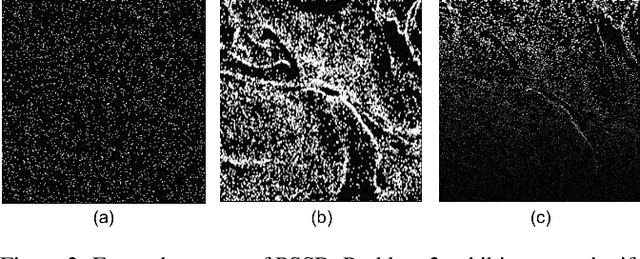
Abstract:The need for accurate and non-intrusive flow measurement methods has led to the widespread adoption of Particle Image Velocimetry (PIV), a powerful diagnostic tool in fluid motion estimation. This study investigates the tremendous potential of spike cameras (a type of ultra-high-speed, high-dynamic-range camera) in PIV. We propose a deep learning framework, Spike Imaging Velocimetry (SIV), designed specifically for highly turbulent and intricate flow fields. To aggregate motion features from the spike stream while minimizing information loss, we incorporate a Detail-Preserving Hierarchical Transform (DPHT) module. Additionally, we introduce a Graph Encoder (GE) to extract contextual features from highly complex fluid flows. Furthermore, we present a spike-based PIV dataset, Particle Scenes with Spike and Displacement (PSSD), which provides labeled data for three challenging fluid dynamics scenarios. Our proposed method achieves superior performance compared to existing baseline methods on PSSD. The datasets and our implementation of SIV are open-sourced in the supplementary materials.
AGO: Adaptive Grounding for Open World 3D Occupancy Prediction
Apr 14, 2025Abstract:Open-world 3D semantic occupancy prediction aims to generate a voxelized 3D representation from sensor inputs while recognizing both known and unknown objects. Transferring open-vocabulary knowledge from vision-language models (VLMs) offers a promising direction but remains challenging. However, methods based on VLM-derived 2D pseudo-labels with traditional supervision are limited by a predefined label space and lack general prediction capabilities. Direct alignment with pretrained image embeddings, on the other hand, fails to achieve reliable performance due to often inconsistent image and text representations in VLMs. To address these challenges, we propose AGO, a novel 3D occupancy prediction framework with adaptive grounding to handle diverse open-world scenarios. AGO first encodes surrounding images and class prompts into 3D and text embeddings, respectively, leveraging similarity-based grounding training with 3D pseudo-labels. Additionally, a modality adapter maps 3D embeddings into a space aligned with VLM-derived image embeddings, reducing modality gaps. Experiments on Occ3D-nuScenes show that AGO improves unknown object prediction in zero-shot and few-shot transfer while achieving state-of-the-art closed-world self-supervised performance, surpassing prior methods by 4.09 mIoU.
Inter-event Interval Microscopy for Event Cameras
Apr 08, 2025Abstract:Event cameras, an innovative bio-inspired sensor, differ from traditional cameras by sensing changes in intensity rather than directly perceiving intensity and recording these variations as a continuous stream of "events". The intensity reconstruction from these sparse events has long been a challenging problem. Previous approaches mainly focused on transforming motion-induced events into videos or achieving intensity imaging for static scenes by integrating modulation devices at the event camera acquisition end. In this paper, for the first time, we achieve event-to-intensity conversion using a static event camera for both static and dynamic scenes in fluorescence microscopy. Unlike conventional methods that primarily rely on event integration, the proposed Inter-event Interval Microscopy (IEIM) quantifies the time interval between consecutive events at each pixel. With a fixed threshold in the event camera, the time interval can precisely represent the intensity. At the hardware level, the proposed IEIM integrates a pulse light modulation device within a microscope equipped with an event camera, termed Pulse Modulation-based Event-driven Fluorescence Microscopy. Additionally, we have collected IEIMat dataset under various scenes including high dynamic range and high-speed scenarios. Experimental results on the IEIMat dataset demonstrate that the proposed IEIM achieves superior spatial and temporal resolution, as well as a higher dynamic range, with lower bandwidth compared to other methods. The code and the IEIMat dataset will be made publicly available.
Multimodal Task Representation Memory Bank vs. Catastrophic Forgetting in Anomaly Detection
Feb 10, 2025



Abstract:Unsupervised Continuous Anomaly Detection (UCAD) faces significant challenges in multi-task representation learning, with existing methods suffering from incomplete representation and catastrophic forgetting. Unlike supervised models, unsupervised scenarios lack prior information, making it difficult to effectively distinguish redundant and complementary multimodal features. To address this, we propose the Multimodal Task Representation Memory Bank (MTRMB) method through two key technical innovations: A Key-Prompt-Multimodal Knowledge (KPMK) mechanism that uses concise key prompts to guide cross-modal feature interaction between BERT and ViT. Refined Structure-based Contrastive Learning (RSCL) leveraging Grounding DINO and SAM to generate precise segmentation masks, pulling features of the same structural region closer while pushing different structural regions apart. Experiments on MVtec AD and VisA datasets demonstrate MTRMB's superiority, achieving an average detection accuracy of 0.921 at the lowest forgetting rate, significantly outperforming state-of-the-art methods. We plan to open source on GitHub.
 Add to Chrome
Add to Chrome Add to Firefox
Add to Firefox Add to Edge
Add to Edge